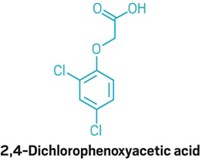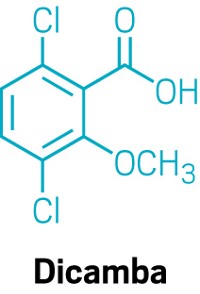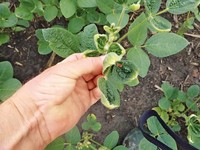Advertisement
Grab your lab coat. Let's get started
Welcome!
Welcome!
Create an account below to get 6 C&EN articles per month, receive newsletters and more - all free.
It seems this is your first time logging in online. Please enter the following information to continue.
As an ACS member you automatically get access to this site. All we need is few more details to create your reading experience.
Not you? Sign in with a different account.
Not you? Sign in with a different account.
ERROR 1
ERROR 1
ERROR 2
ERROR 2
ERROR 2
ERROR 2
ERROR 2
Password and Confirm password must match.
If you have an ACS member number, please enter it here so we can link this account to your membership. (optional)
ERROR 2
ACS values your privacy. By submitting your information, you are gaining access to C&EN and subscribing to our weekly newsletter. We use the information you provide to make your reading experience better, and we will never sell your data to third party members.
Pesticides
Dicamba drift continued unabated in 2021
Controls did little to minimize herbicide’s damage to nontarget plants, incident reports suggest
by Britt E. Erickson
December 22, 2021
The herbicide dicamba continued to wreak havoc on nontarget agricultural crops during the 2021 growing season, despite measures to minimize drift that the US Environmental Protection Agency put in place in 2020, according to a summary of incident reports released Dec. 21.

In light of the new data, the EPA is reevaluating whether dicamba can be sprayed on soybeans and cotton that have been genetically engineered to tolerate it, without posing unreasonable risks to nontarget plants. But even if the agency decides to take action to address the alleged dicamba-drift incidents, it acknowledges that it is unlikely to implement regulations before the 2022 growing season.
The EPA has been working with state agencies to investigate complaints of dicamba damage to nontolerant plants ever since it approved the use of the herbicide on genetically modified soybeans and cotton in 2016.
A coalition of environmental groups sued the EPA in 2017 over the dicamba approvals, claiming the agency violated environmental laws. In June 2020, a federal appeals court ruled in favor of the plaintiffs, ordering the EPA to cancel all dicamba registrations. But in October 2020, under former President Donald J. Trump, the agency issued new registrations for two dicamba products and extended the registration for another one. The EPA included new controls to prevent drift in all three cases.
Those controls, however, did not make much of a difference in the number and severity of dicamba related incidents, the EPA says. For the 2021 growing season, the EPA received about 3,500 incident reports related to dicamba damage. Affected plants include grapes, peanuts, rice, sugar beets, and sweet potatoes, as well as nontolerant soybeans and nonagricultural plants and trees.

Farm groups representing soybean and cotton growers question the incident-report data. They claim that it is unclear whether some complaints were submitted to multiple agencies and were therefore double counted. They also question whether the complaints were investigated to confirm the damages and assess the causes.
“The agricultural community expects regulators to be clear with the data on which they are making decisions,” Alan Meadows, a soybean grower in Tennessee and member of the American Soybean Association’s board of directors, says in a statement. “It is concerning the information released provides an incomplete picture,” he says.
Environmental groups argue that the EPA has sufficient data to ban the herbicide. “Dicamba’s five-year trail of unprecedented devastation is more than enough evidence to ban all over-the-top uses now,” Bill Freese, science director at the Center for Food Safety, one of the plaintiffs in the 2017 lawsuit, says in a statement. “More review and study must not be used as pretext for still further procrastination,” he says.





Join the conversation
Contact the reporter
Submit a Letter to the Editor for publication
Engage with us on Twitter